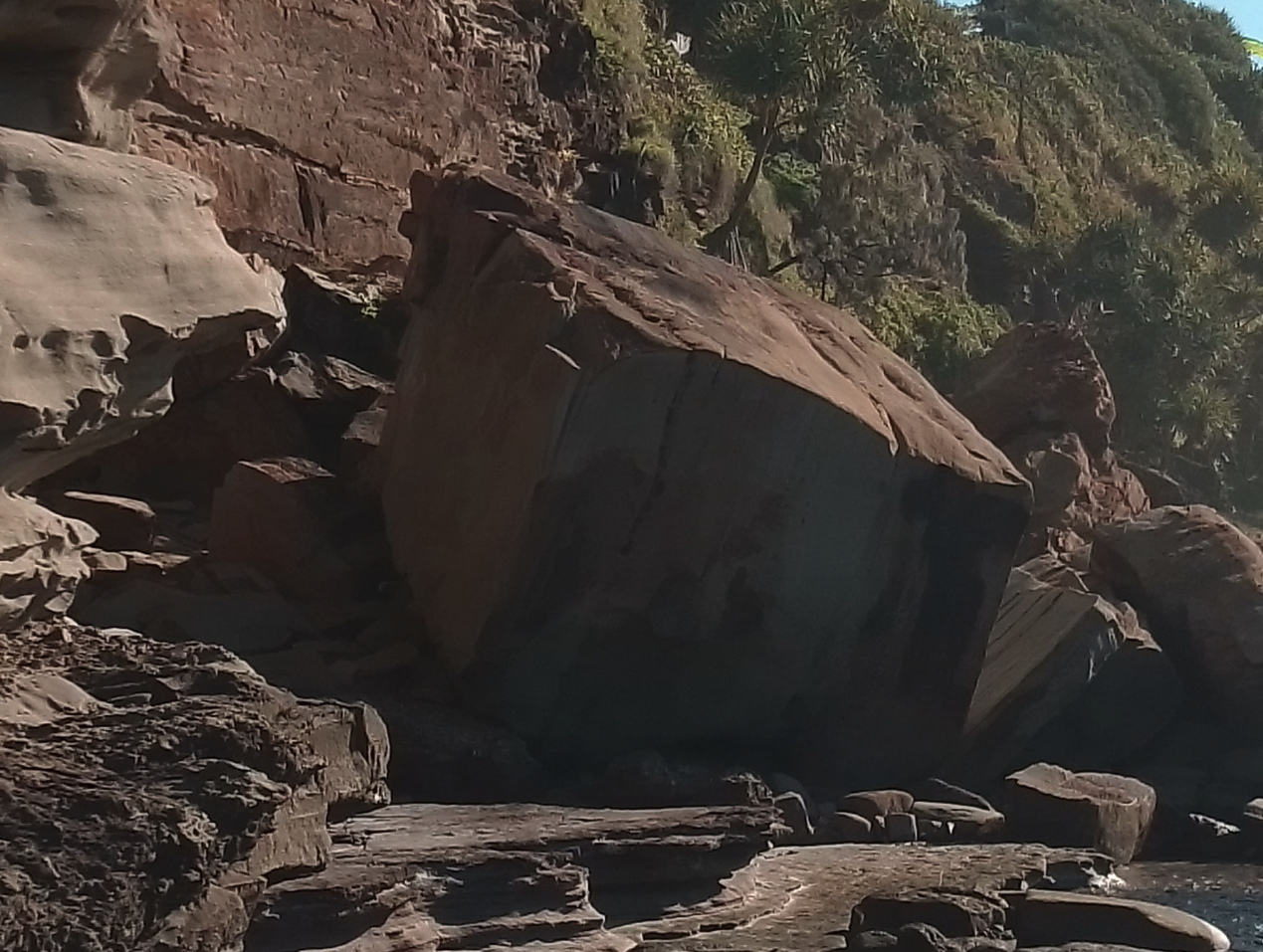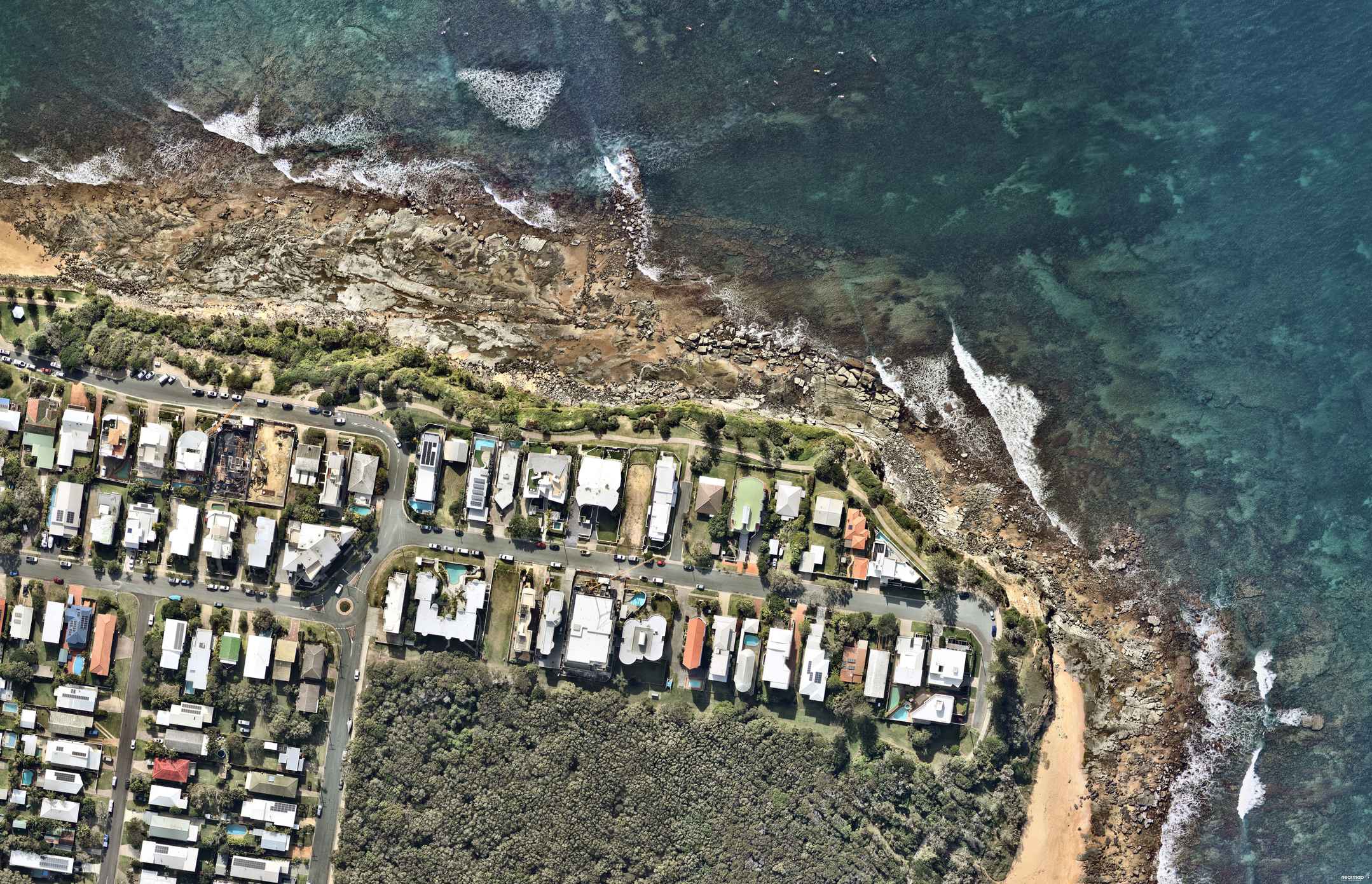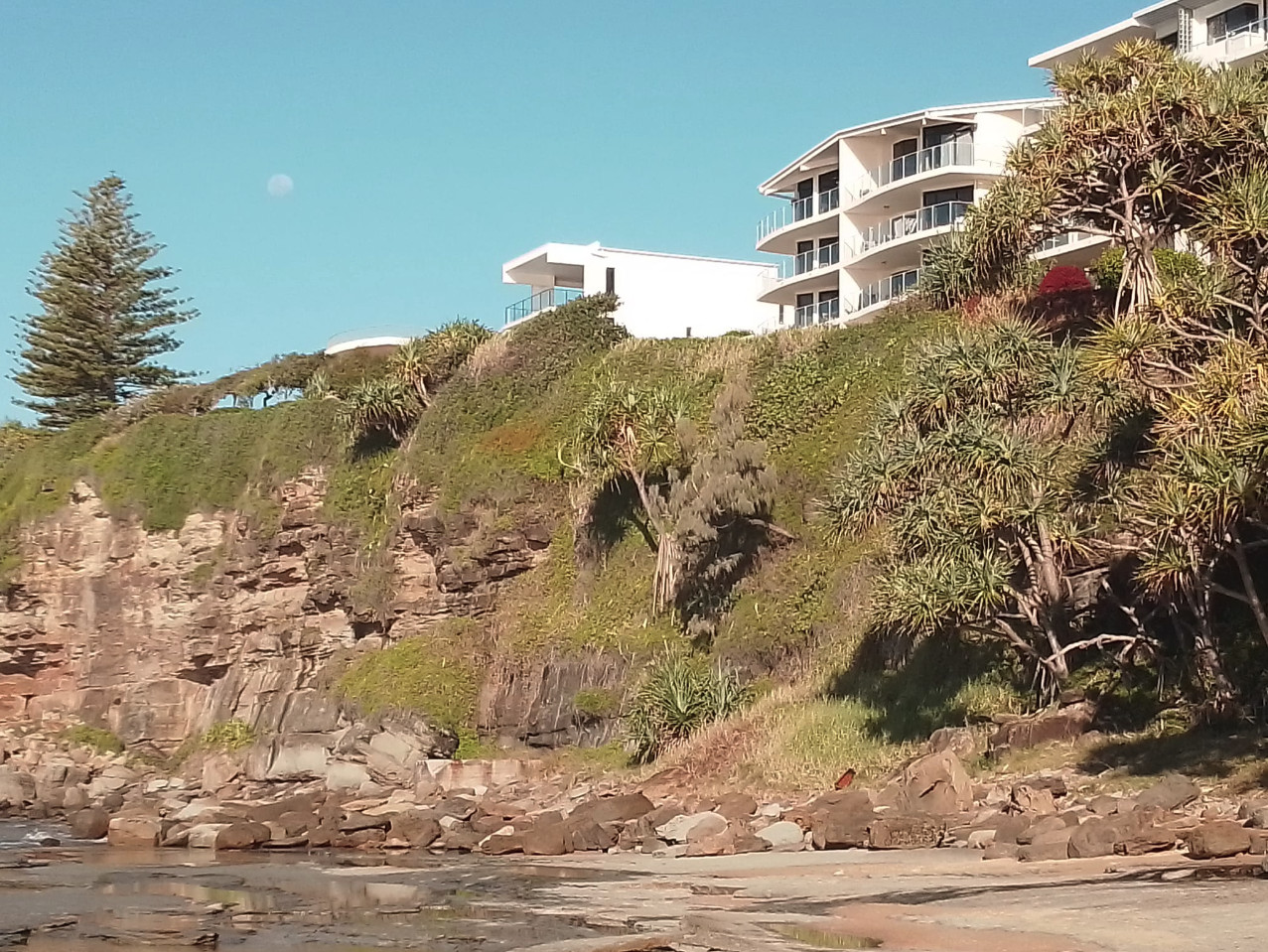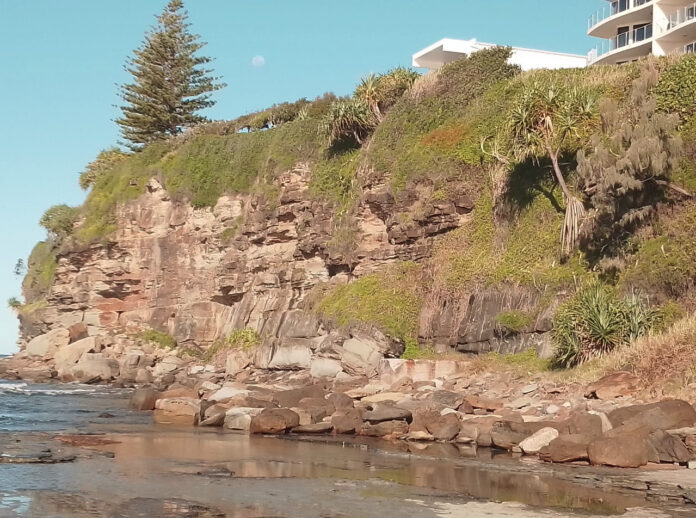Sunshine Coast Council says it will work to find solutions to a crumbling headland, adorned by upscale apartment towers.
Significant erosion has contributed to rock falls at the cliff of popular Moffat Headland.
One local, Cory Walden, said there was some massive boulders at the base of it.
“One of the chunks is bigger than me,” he said.
He said rock falls were becoming more frequent and significant.
“If it (the cliff) keeps eroding away at this rate, there won’t be a road at the top and the Ma and Pa Bendall Park will be gone.
“The way it’s happened in the last two to three years, give it another 10 years, it will be interesting to see how much it deteriorates.”
He said the recent falls were treacherous.
“God bless anyone walking under there,” he said.

Mr Walden, 50, has lived in the area for decades. He said the condition of the headland was unsettling.
“It is a worry, and a concern to me,” he said.
A council spokesperson said parts of the cliff face were breaking free and they would work to address the issue.
“We expect this rock fall to continue at Moffat Beach into the future as part of natural coastal process of cliff and hillside erosion,” they said.
“The latest slope stability assessment done at the time of the Shelly to Moffat Beach Study in November 2022 recommended additional safety measures be installed in certain areas of the headland for the safety and conservation of the cliff and rock face.
“However, before any changes are made, the community will be asked for input as we work to find appropriate solutions that will preserve the beautiful headland while addressing the risk to public safety.”

The spokesperson said some preliminary work had been done.
“Restoration work has taken place at the Queen of Colonies Foreshore Reserve to repair the erosion caused by the informal track along the steep section of the reserve,” they said.
“This included conditioning and stabilising soil and closing out the informal access trails.
“This work will help to protect and enhance the habitat and contribute to ecological functionality of the area.”
Mr Walden wondered whether the construction of apartments in recent years could have contributed to an acceleration in erosion, but University of the Sunshine Coast geographer Javier Leon said it was likely the result of more persistent and intense weather systems.
“We have observed that during the recent triple La Nina (2020-2023), the frequency of storms increased from 7.2 storms per year (2015-2020) to 12.6 storms per year,” he said.
“The direction also shifted counter-clockwise, from prevailing south-east to east.
“Both these factors have contributed to increased erosion, particularly on north-facing coastlines such as Moffat Beach.
“La Nina has had a considerable role in the recently observed erosion.
“Other factors can include accelerating sea-level rise.”

Mr Leon, who specialises in coastal geography, has previously spoken about the need to be prepared for erosion impacts.
Related stories: Call for planned retreat from coast and New partnership to mitigate erosion.
He said there was a few hotspots in the region for erosion.
“It varies with time. During La Nina years, north-facing and east-facing beaches such as Moffat Beach, Maroochydore or Coolum might experience more erosion,” he said.
He held concerns that erosion could have an adverse effect on the coastline, and it could pose a threat to infrastructure, like the apartment blocks at Moffats, in coming years.
“We should expect erosion hazards to increase as increased coastal development meets more intense compounding impacts due to climate change, like sea-level rise, changes in wave climate, stronger cyclones and El Nino and La Nina cycle,” he said.
The aerial photo in this story is from Australian location intelligence company Nearmap. The company provides government organisations, architectural, construction and engineering firms, and other companies, with easy, instant access to high-resolution aerial imagery, city-scale 3D content, artificial intelligence data sets, and geospatial tools to assist with urban planning, monitoring and development projects in Australia, New Zealand and North America.
Local journalists supporting local people. Help keep independent and fair Sunshine Coast news coming by subscribing to our FREE daily news feed. All it requires is your name and email at the bottom of this article.





